Recommendations for the design of the kitchen window
The selection of products depends on the area and style of the room:
- For a small kitchen, white or beige blinds that do not attract attention and reflect sunlight are suitable. In large kitchens, you can use both light and dark shades.
- To visually raise the ceiling, vertical structures are selected.
- To expand the space - horizontal slats.
- Various types of blinds are suitable for almost any kitchen décor. Laconic plastic models are appropriate in modern styles, and blinds made of wood or fabric - in rustic and eco-styles.
See also how curtains look in the kitchen.
Pros and cons
Before deciding on the purchase of blinds for the kitchen, it is worth considering their performance characteristics:
| pros | Minuses |
|---|---|
Most of the products are easy to care for, they do not need to be removed and washed - just wipe the dust with a damp cloth. |
A painstaking installation that may require professional assistance. |
Protect from the sun and prying eyes with one turn of the slats. |
Potential damage due to careless handling. |
| They are distinguished by a wide selection of colors and patterns. | In the wind, they make loud sounds, knocking against each other. |
| They do not ignite from the proximity of the stove, do not absorb odors. | Each part must be washed separately, and special cleaning agents must be used to get rid of grease. |
They give the kitchen an original, finished look. |
Due to the unusual design of the structure, the kitchen can be associated with an office. |
What blinds are best for windows?
Today, a wide range of products allows you to choose certain varieties that match any interior: horizontal or vertical, with photo printing or various textures, as well as pleated. Let's consider each type in more detail.
Horizontal blinds in the kitchen
The most popular variant is also called Venetian. They are a reliable structure made of planks. Can be kept open or closed by adjusting the amount of light. Fits well into the interior of a small kitchen. Horizontal blinds can be mounted on both the ceiling and the wall.
Vertical blinds in the kitchen
Visually lengthen a room with low ceilings due to vertical tapes. They dose the light level in the kitchen by turning the slats. The blinds can be moved completely to the side, making them look like ordinary curtains. They look less strict than horizontal ones, they make the kitchen more comfortable. They can be short or long, up to the floor.
Vertical models are inexpensive, but when buying, it is worth considering that the stripes are intertwined when a window or balcony door is opened, and the material requires special care.
The photo shows a stylish kitchen interior with long vertical slats in blue.
Photo blinds
Typically, the photographic image is applied to fabric or aluminum blinds.The image format is made in accordance with the wishes of the customer. The design can be individual or selected from a ready-made catalog. Thanks to the high-quality material, the image is clear and long-lasting.
Multi-textured blinds
A feature of multi-textured models is the combination of several materials in one product: plastic and fabric, fabric of different colors and textures.
Thanks to the original combination of materials, many interesting design ideas can be realized, and the most common forms are waves and arches.
Pleated
Consist of pleated fabric fixed to a profile in the form of an accordion. Pleated blinds are installed on a window opening of any shape - round, trapezoidal, arched, triangular. They are made of various types of fabrics with varying degrees of penetration of sunlight.
In the photo there are comfortable pleats in blue color, covering only part of the window.
How to choose the lamella material?
Blinds on a plastic base lightweight and hygienic, easy to care for. They have a wide range of colors. They are not afraid of moisture, can be installed above the sink.
Practical aluminum blinds for the kitchen are durable, are not afraid of humidity and temperature extremes. They do not absorb odors. They have one drawback: the slats open with noise.
Fabric blinds look elegant, imitating the folds of curtains, and a special composition with which the material is impregnated, protects against dust. Not the best option for a kitchen that cooks a lot.
The photo shows a light kitchen interior with laconic plastic blinds.
Wooden blinds have an attractive appearance, are environmentally friendly and are in perfect harmony with wood furniture. Do not install in rooms with high humidity, as the material may deform.
Bamboo lamellae are durable, wear-resistant and last long enough, therefore, appropriate in the kitchen. They give the environment an original look and look good in a Scandinavian and eco-style.
Advantage paper products - low price, but they are short-lived, therefore, they are suitable only for frequent changes of scenery. Makes lighting soft.
Color options
How to choose a shade of blinds to decorate and personalize your kitchen?
Blinds can be neutral, to match the color of the kitchen: in gray, white and beige. They will not stand out from the general background.
In order not to turn the interior into one color spot, designers recommend combining bright details with a neutral design: a headset or additional decor.
The photo shows the interior in cream colors with white blinds and catchy accessories.
Brown and black products dilute the light background, contrasting well with it. For small kitchens, this is not recommended. Dark tones work great in rooms with lots of natural and artificial light.
Colored blinds can serve as accents, decorating and complementing the design. The choice of color depends on the preferences of the home owner, but it is important not to overload the kitchen with bright colors. Green and light green shades will refresh a light kitchen, yellow ones will give warmth and good mood.
Bright red blinds in the kitchen will suit passionate people who want to make the interior expressive and original.
Products with drawings and patterns look harmoniously in rustic styles. It is worthwhile to carefully select models with a print if the kitchen is small.
For courageous kitchen owners, a multi-colored design that will unite all the bright accessories is suitable.
In the photo, rainbow blinds against the background of the kitchen in neutral colors.
Mounting features
The size and price of the structure depend on the place of its installation:
- On the wall - the most popular mount. Lowered blinds completely cover the window and sill.
- On the sash... These products fit tightly to the glass, being fixed between the frames.
- To the ceiling... Most often, vertical models are attached to the ceiling, but this option is not the most convenient for the kitchen.
The photo shows a structure fixed to the wall above the window opening.
What kind of blinds on the windows in the kitchen are more appropriate? Interframe products are labor intensive to install, but are well suited for tight spaces, as they leave free space on the windowsill. They also do not interfere with the opening and closing of windows or doors.
The combination of blinds and curtains in the kitchen
Combining curtains with blinds, you can achieve an interesting effect: curtains or tulle will soften the severity of straight lines. Thick fabric placed over closed horizontal slats will keep sunlight out.
The photo shows a lilac dining room in a classic style with an arched window, pleated and curtains.
Functional blinds can be combined not only with curtains, but also with decorative tulle.
Modern design ideas
Blinds fit perfectly into most interiors. In the loft style, textiles are almost never used, so wooden or metal slats to protect the window will come in handy.
With pleats, which can be of any shape, arched windows will look more modern than fabric ones.
The photo shows the interior in an industrial style, which perfectly fit in with wooden blinds.
What kind of blinds on the windows are appropriate in a large kitchen?
Large slats will look good in a spacious room, and narrow slats will decorate a small room. Products made from natural materials will fit especially well with the light Scandinavian style.
Photo in the interior of the kitchen
If the kitchen is equipped with panoramic windows, long vertical models are perfect: the illumination of the entire room can be adjusted in one motion. The same technique can be used in a spacious room with small windows: long ribbons will create the illusion of large window openings.
The photo shows a spacious kitchen with vertical blinds from ceiling to floor.
Interframe products in the kitchen with a balcony door are very convenient, since, unlike curtains and tulle, they allow you to use the door and window without any difficulty.
In the photo, a horizontal structure attached to a beamed ceiling fits perfectly into the Provence style.
The fashion for blinds is still gaining momentum, as few decide to change their interior with their help. Despite this, practical and outwardly attractive products are increasingly appearing in homes, displacing the usual, but not always comfortable curtains and tulle.

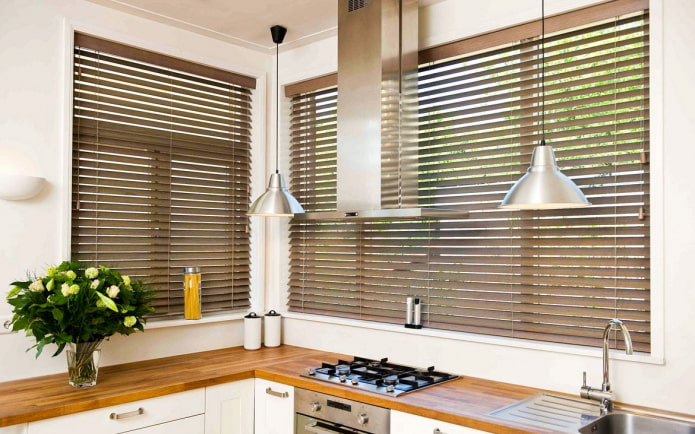
 10 practical tips for arranging a small kitchen in the country
10 practical tips for arranging a small kitchen in the country
 12 simple ideas for a small garden that will make it visually spacious
12 simple ideas for a small garden that will make it visually spacious
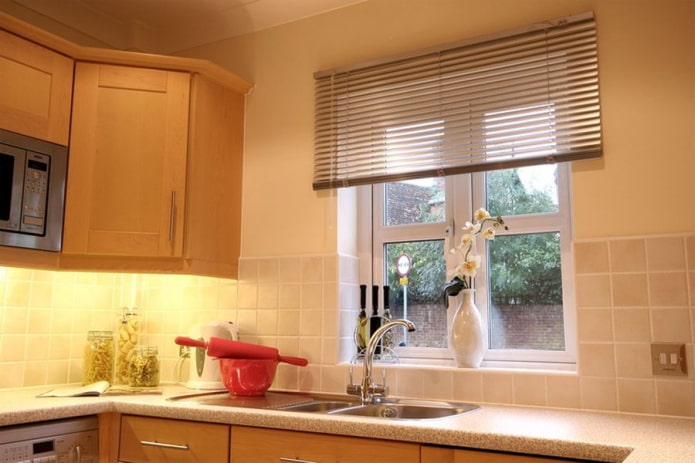
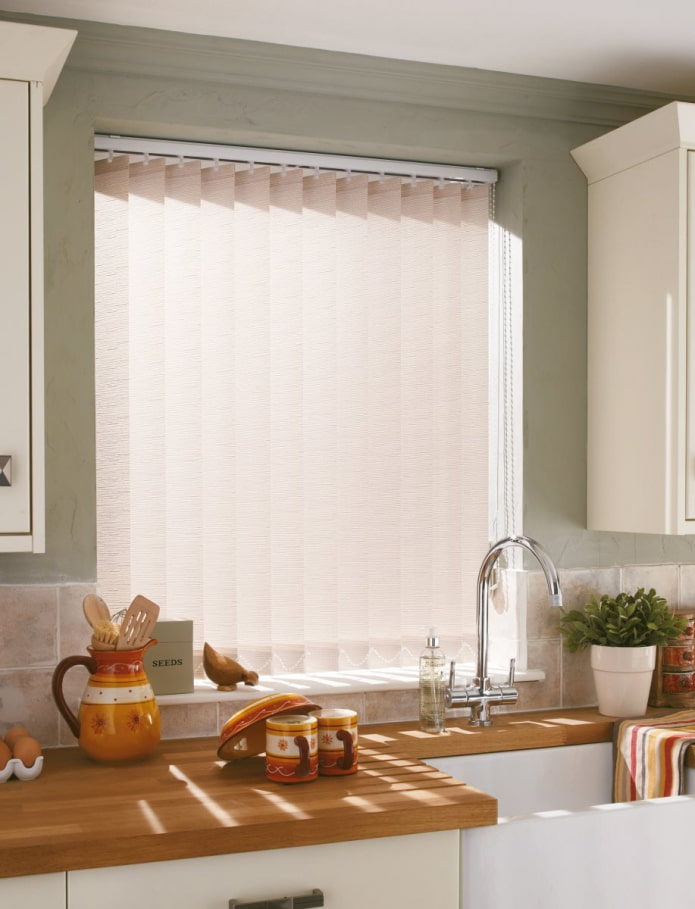

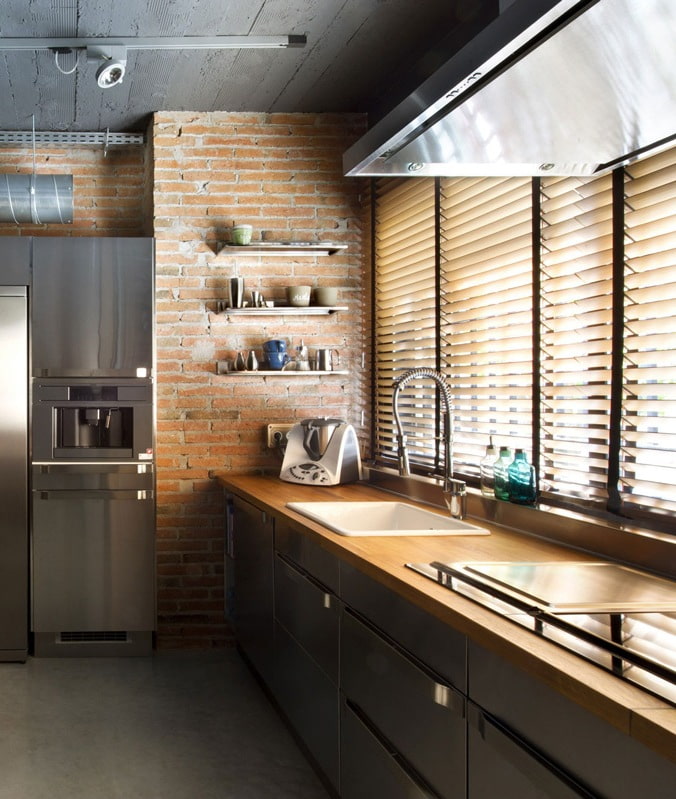
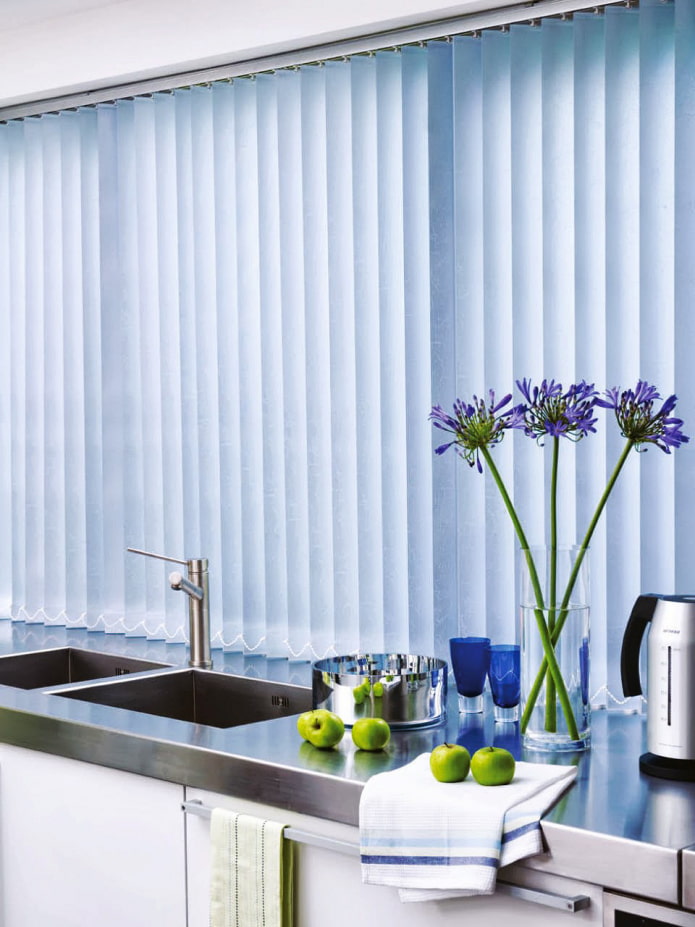
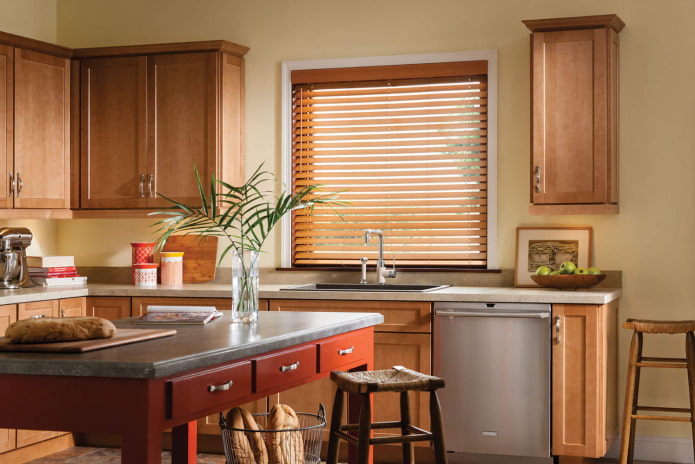
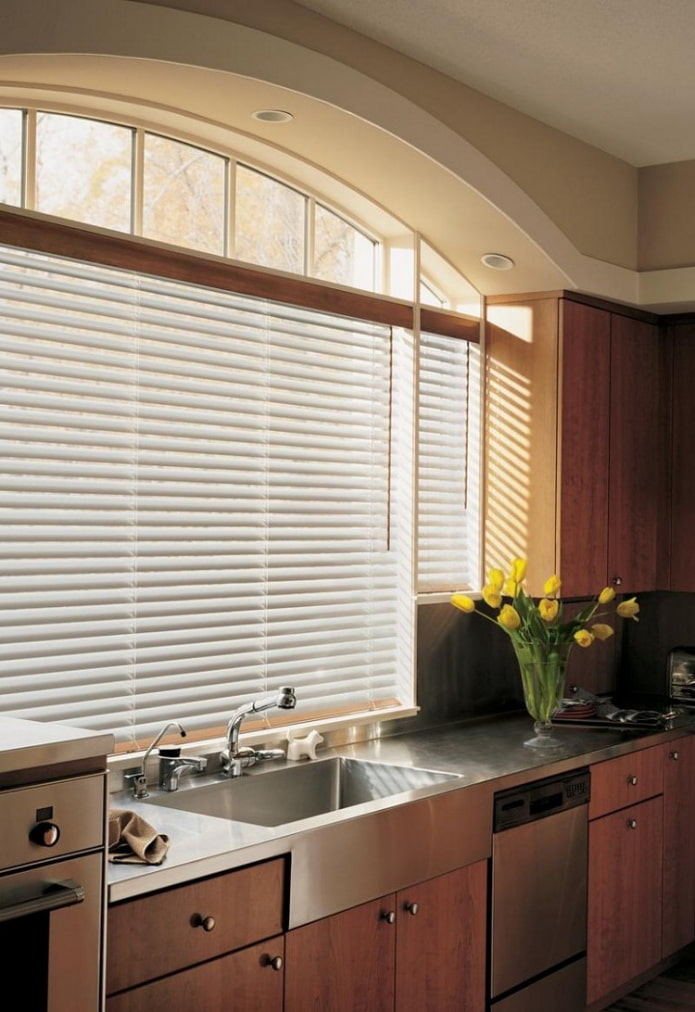
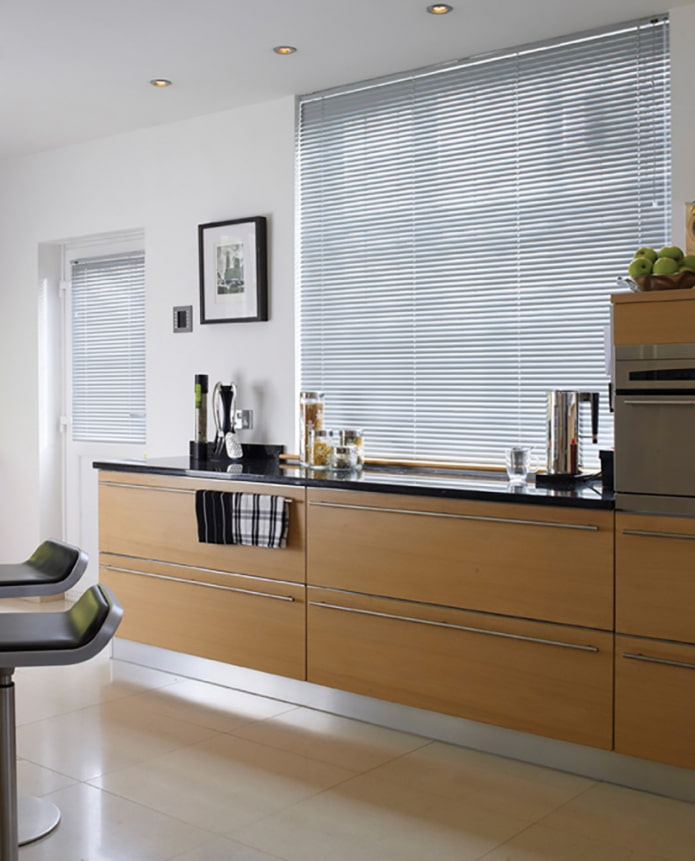
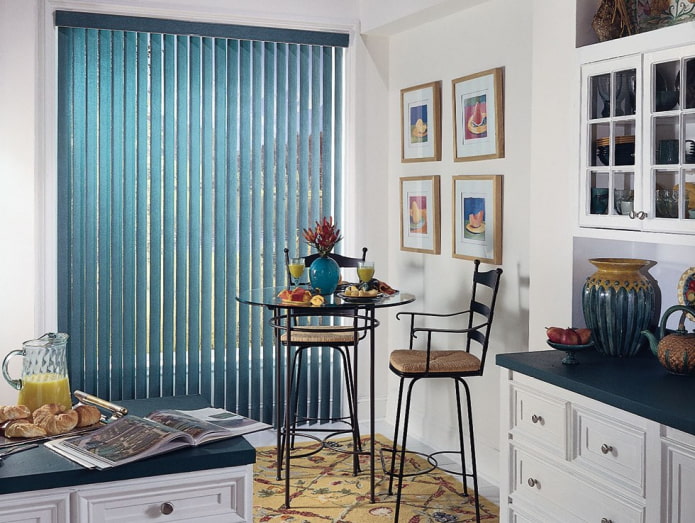
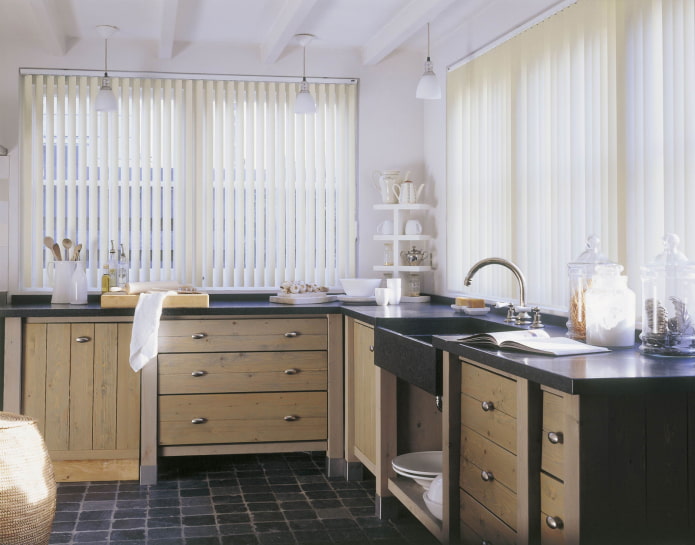
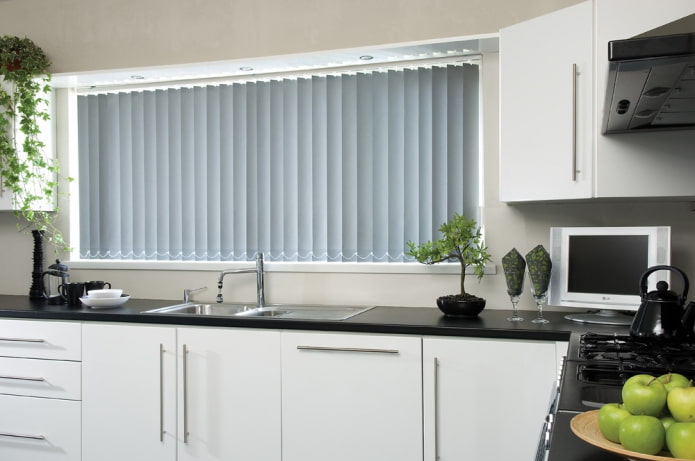
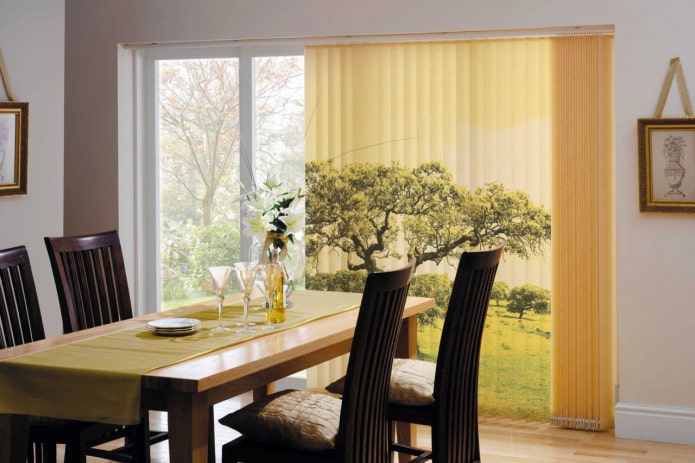
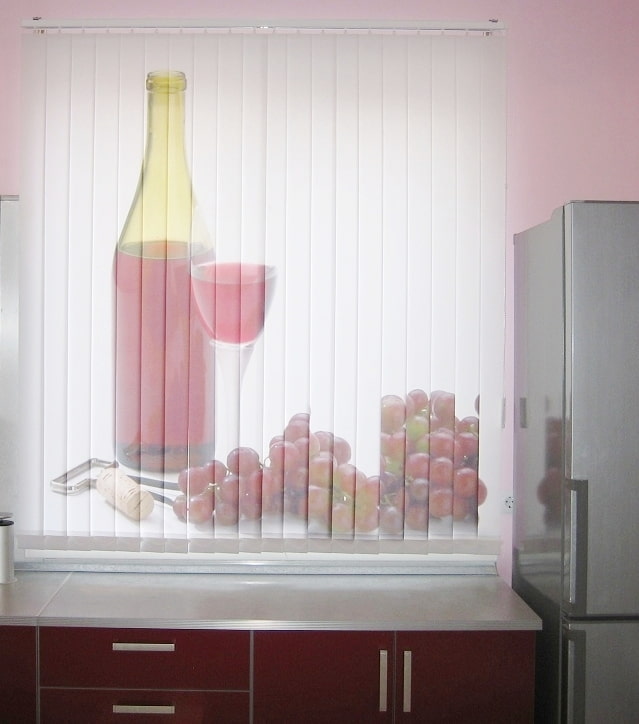
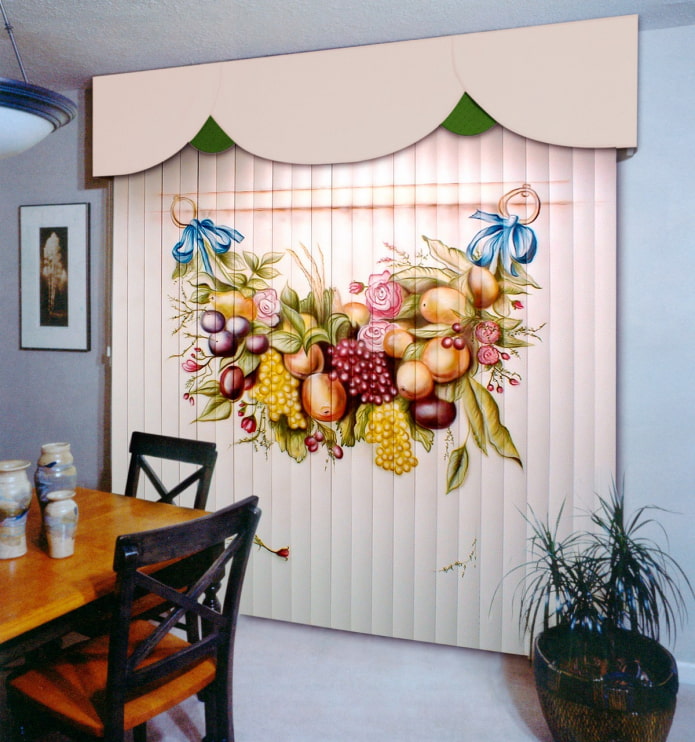
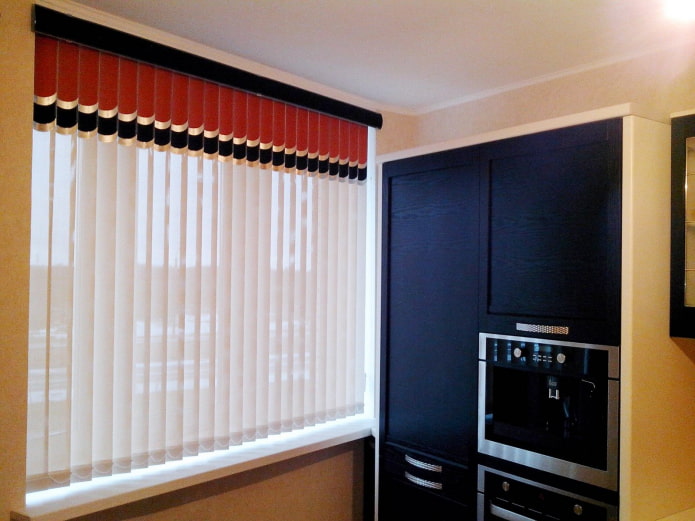
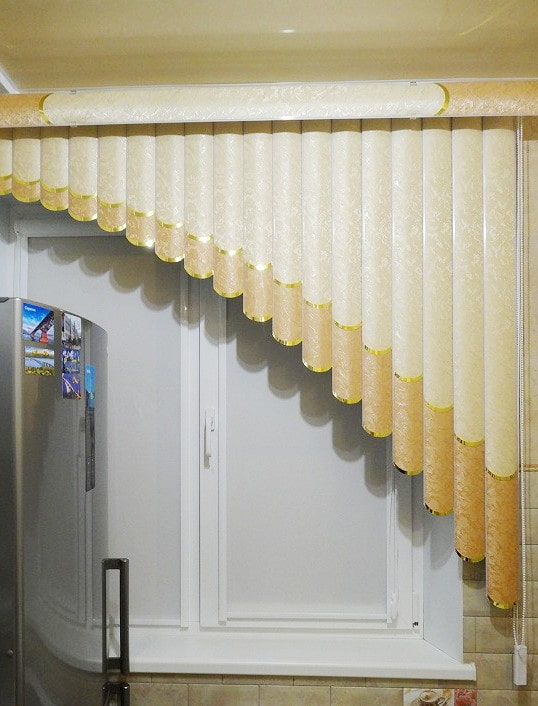

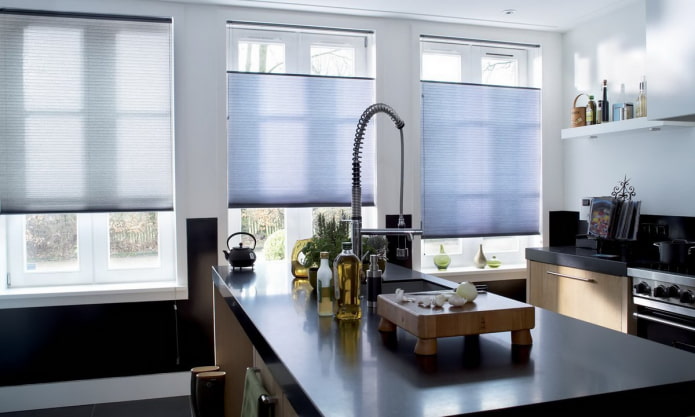

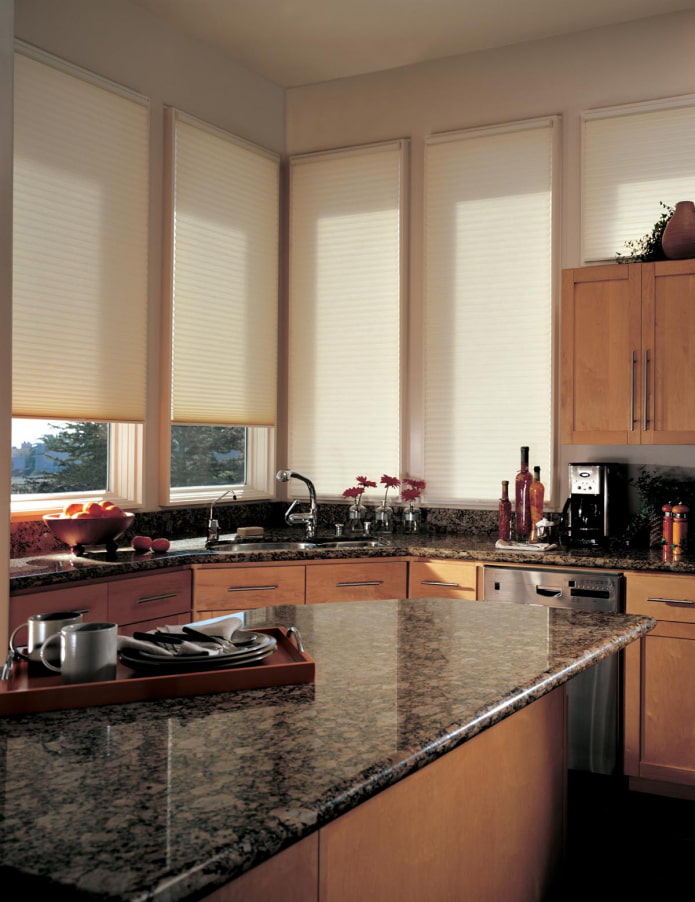
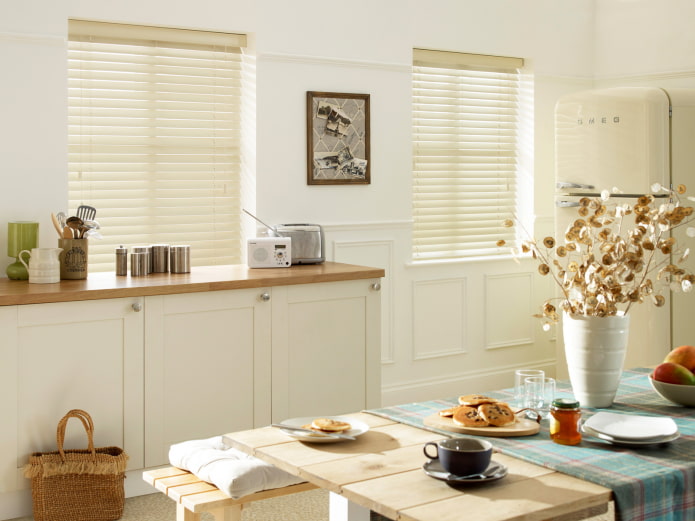

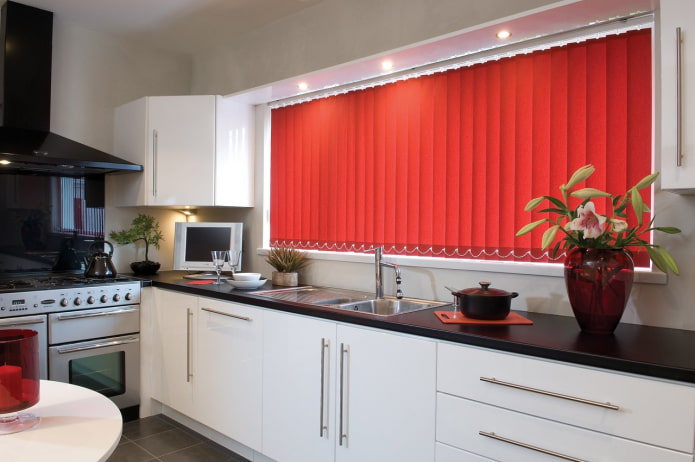
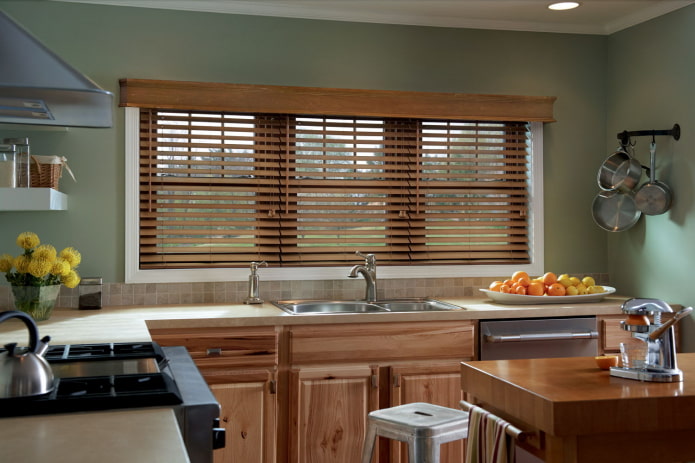
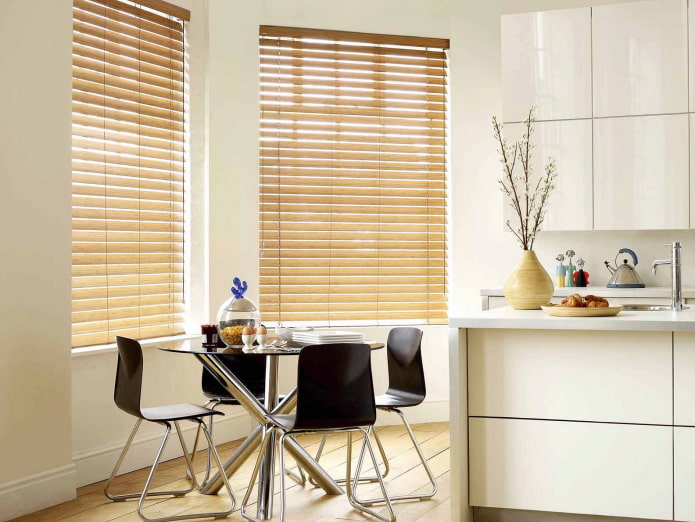
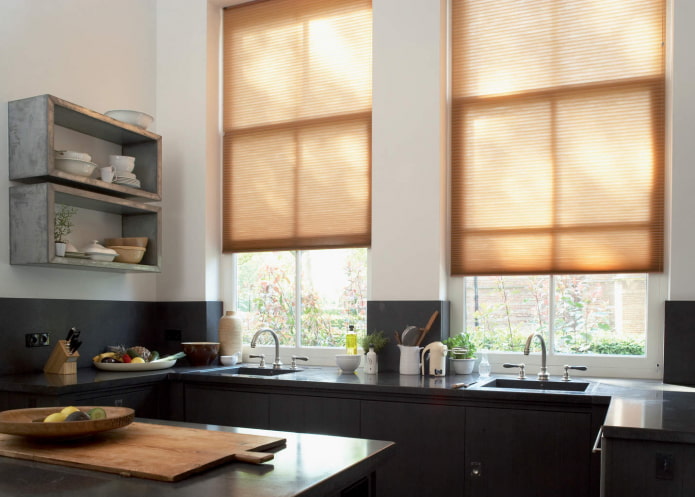
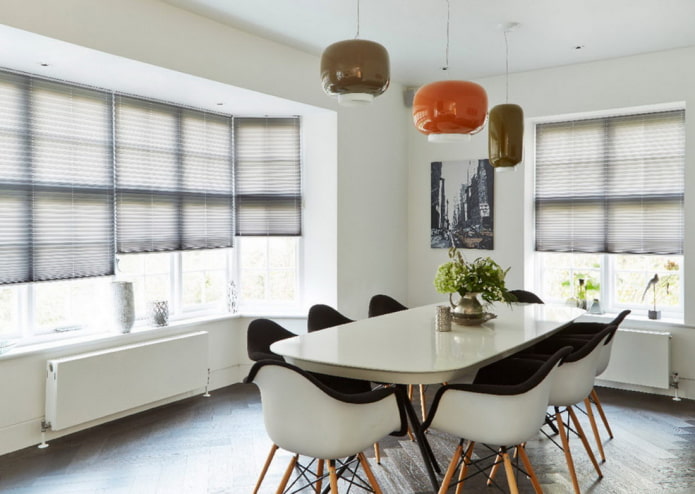
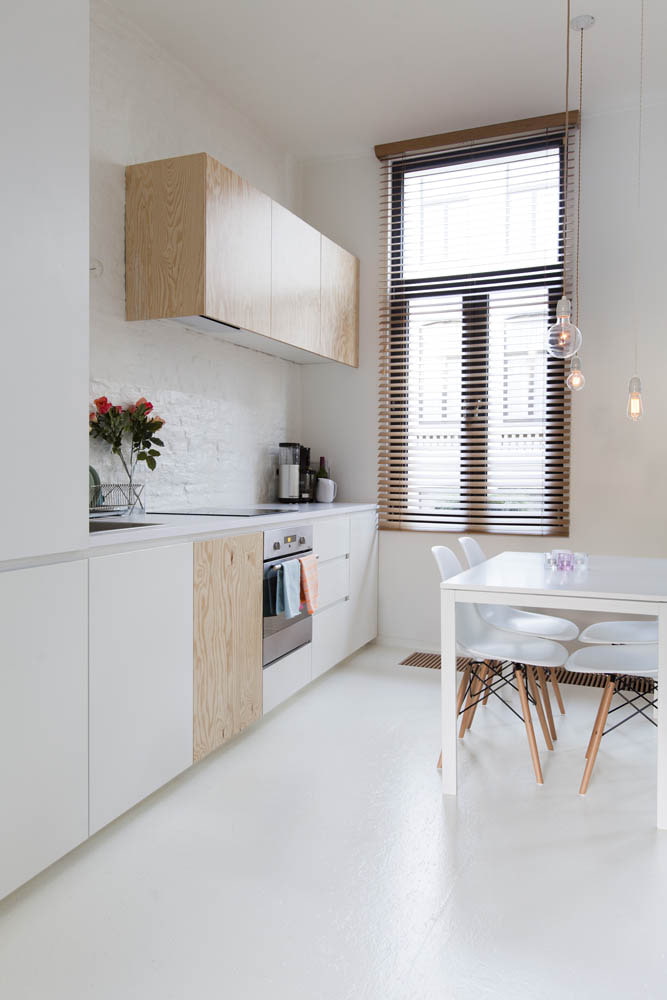
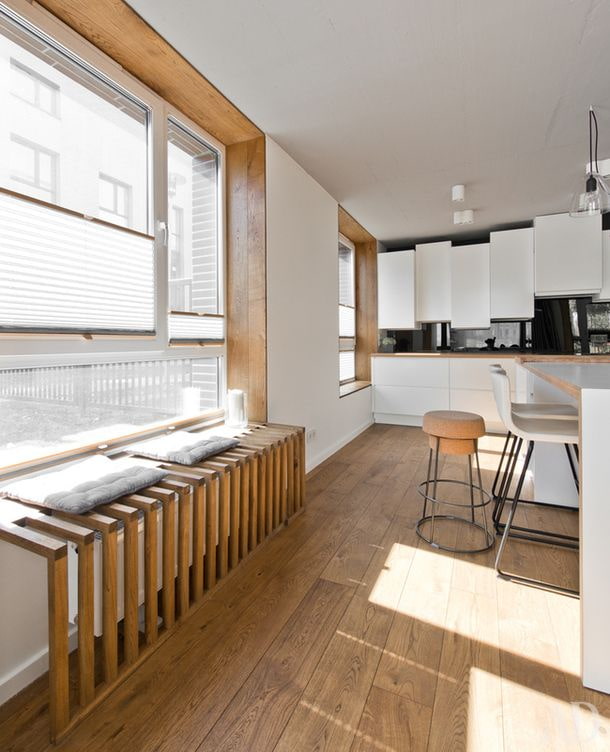
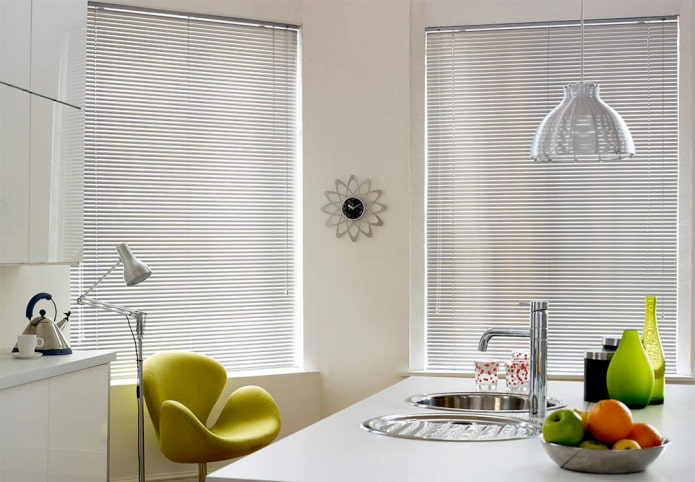
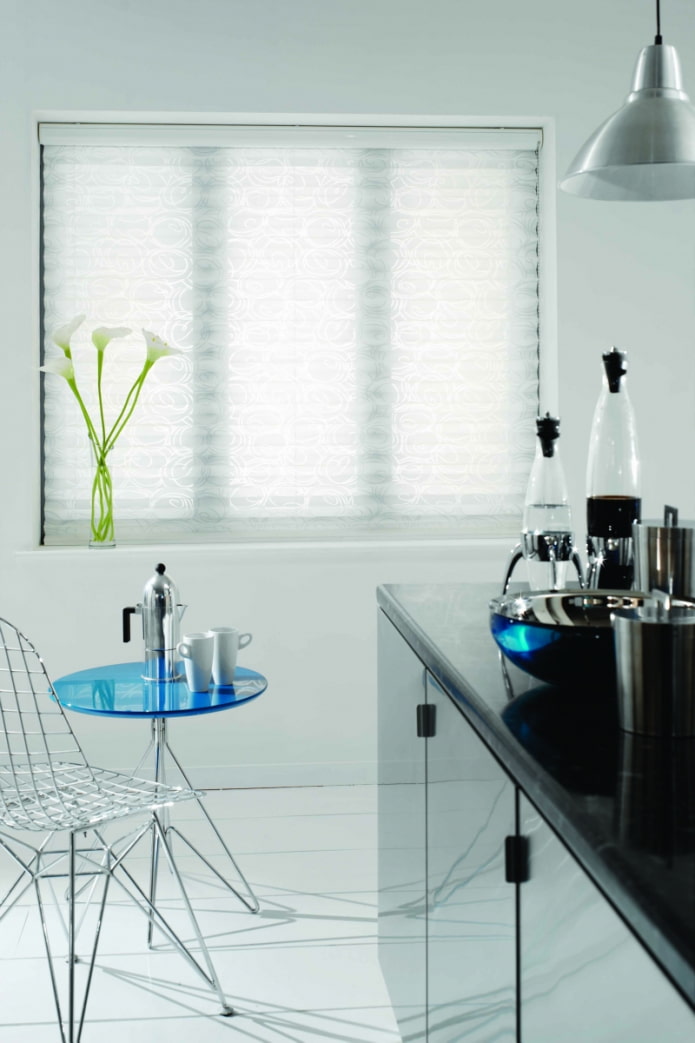
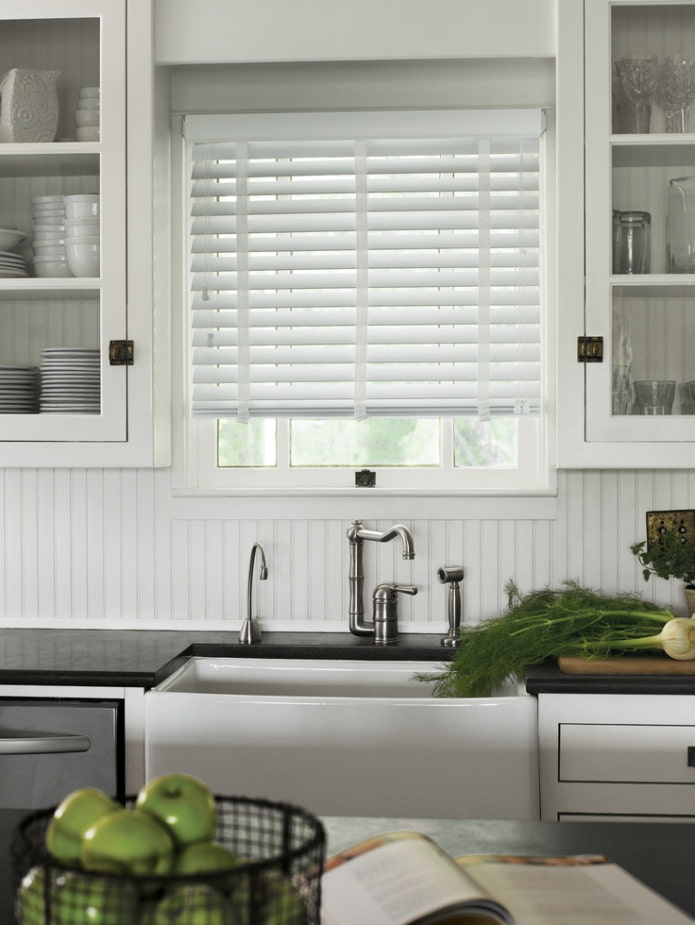
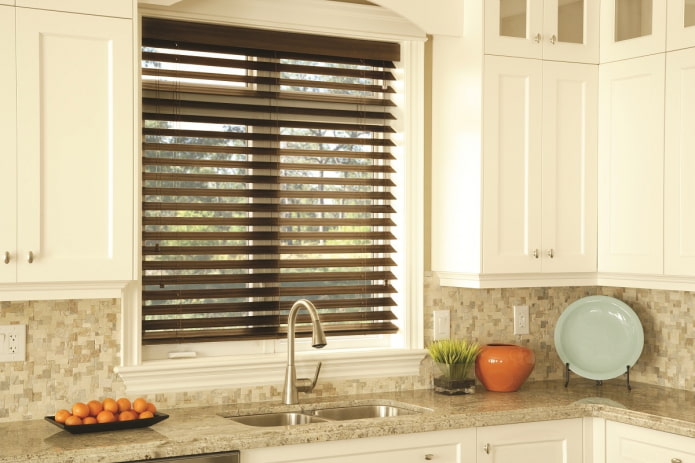

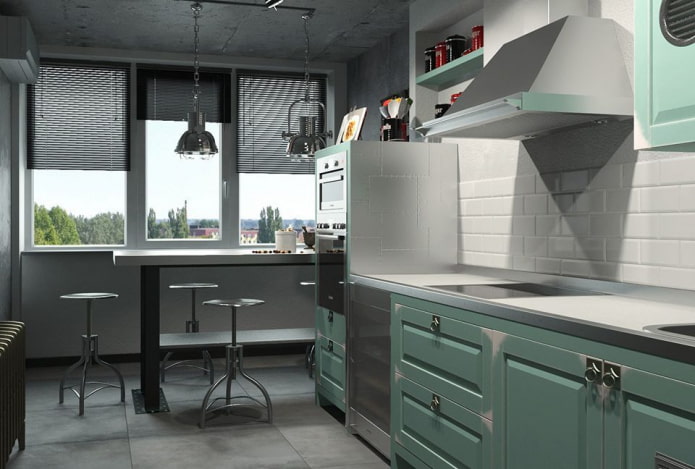
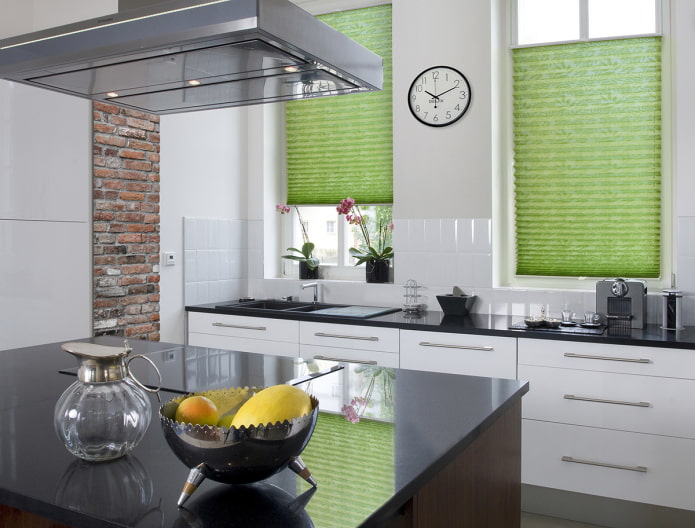
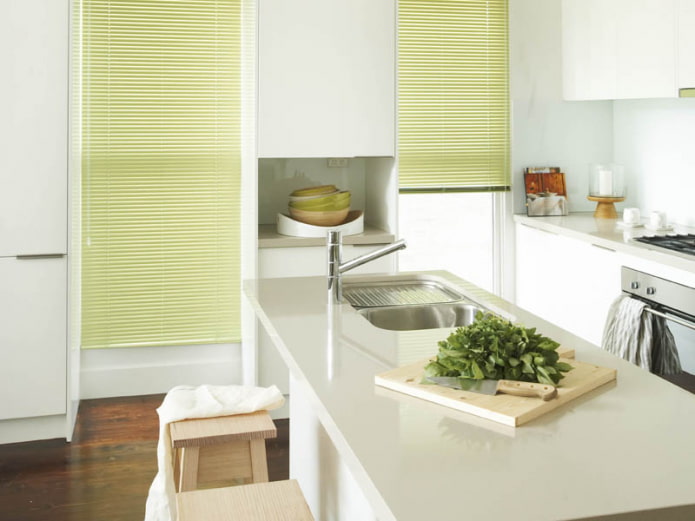
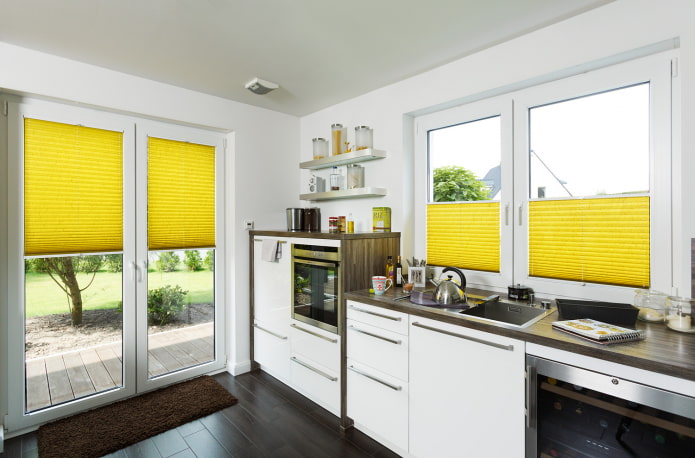
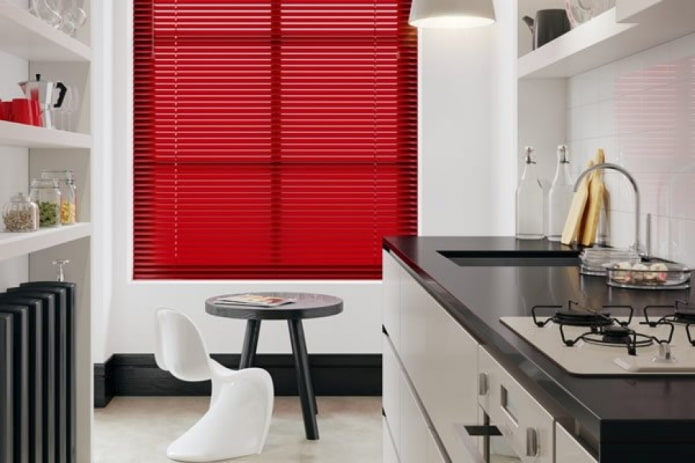
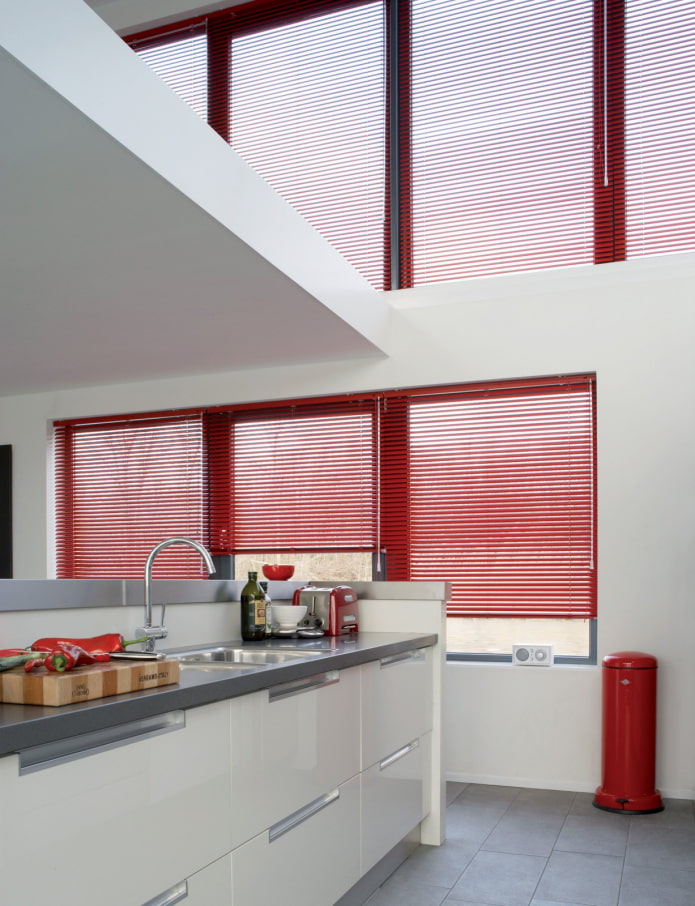

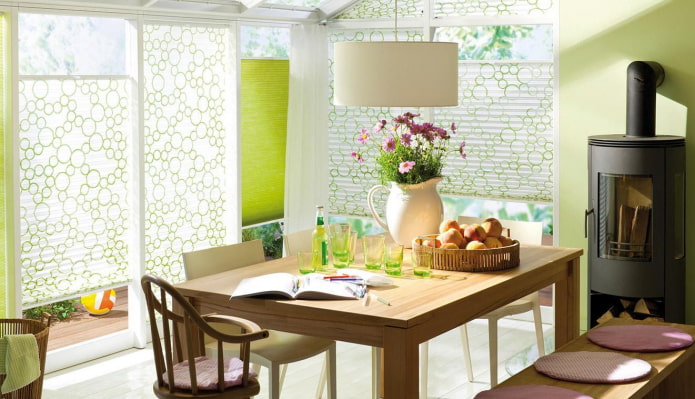

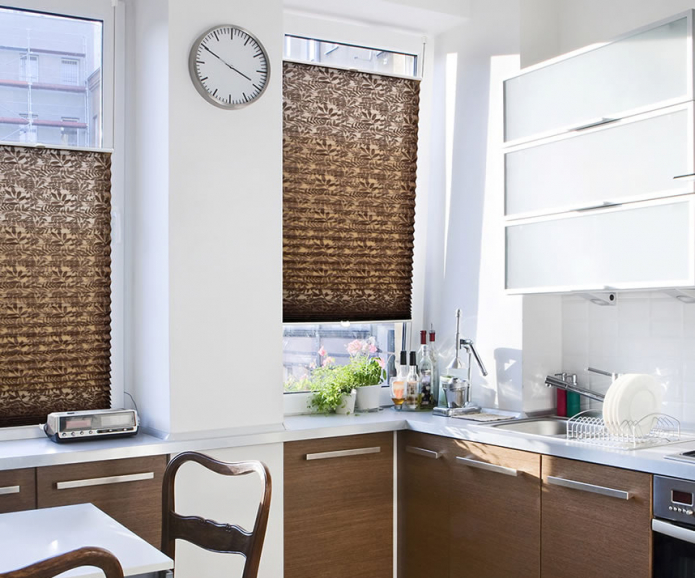
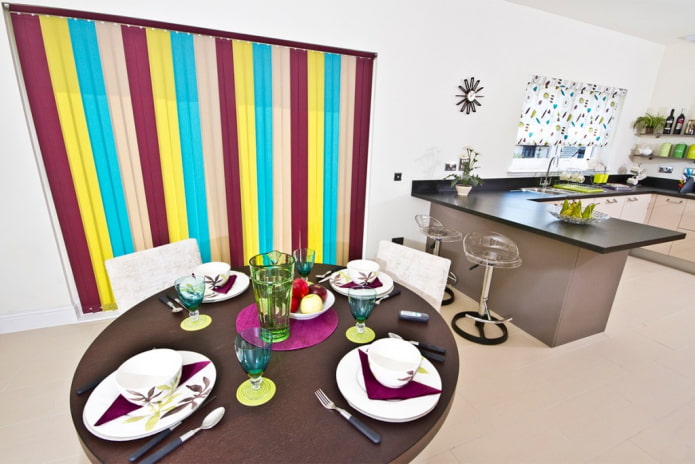
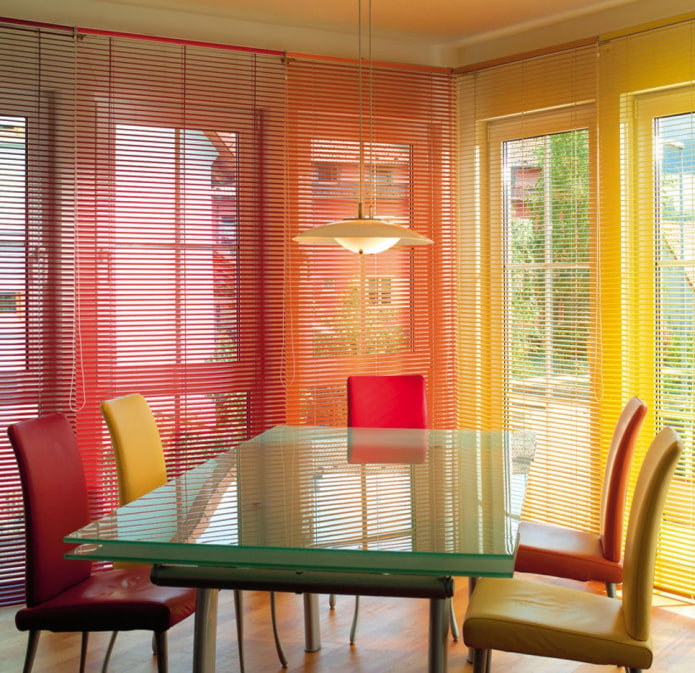
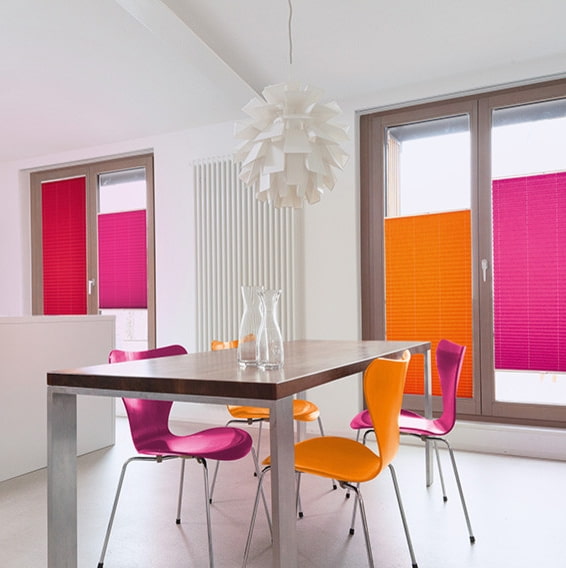

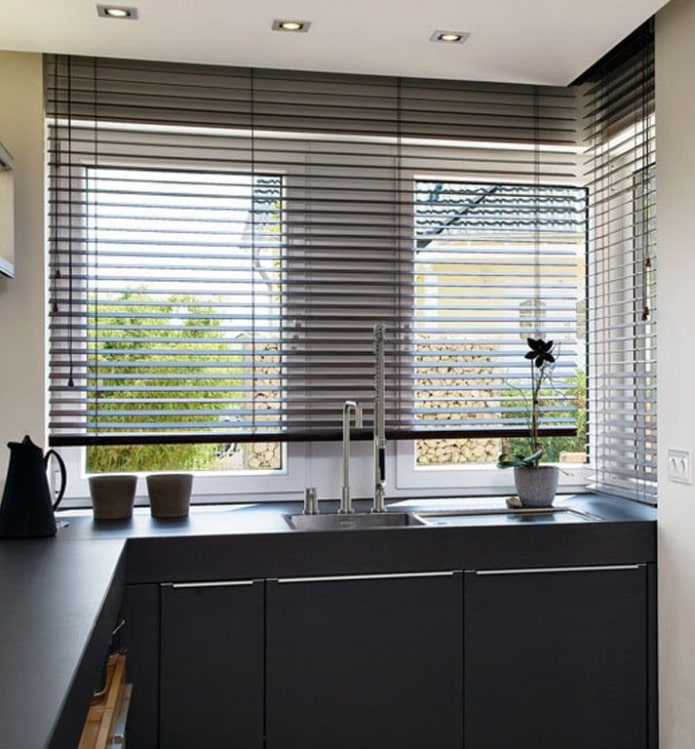
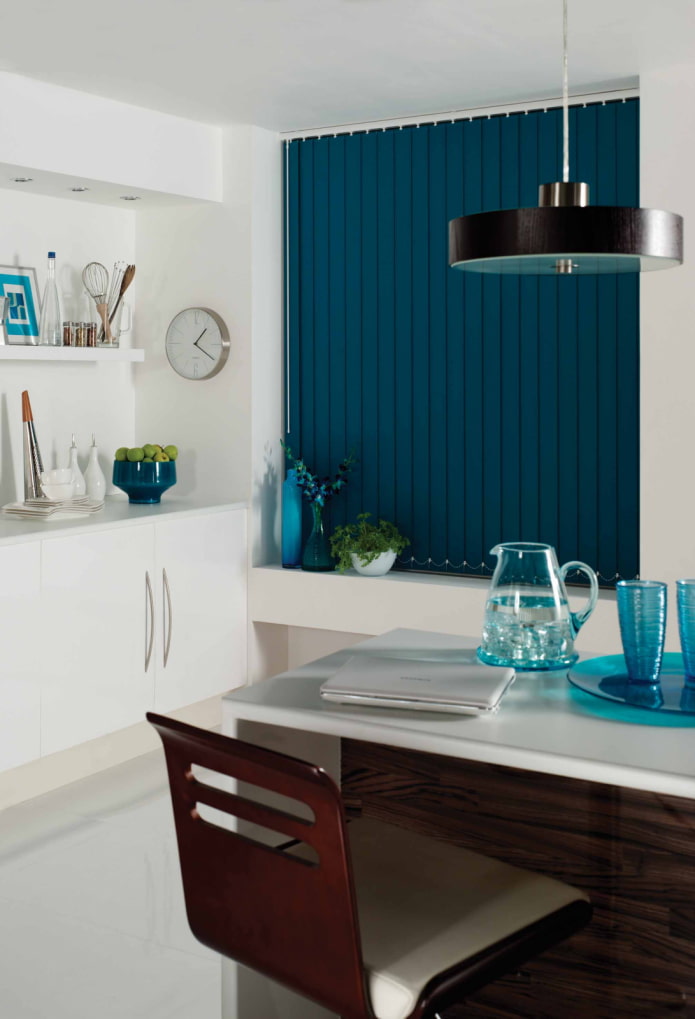

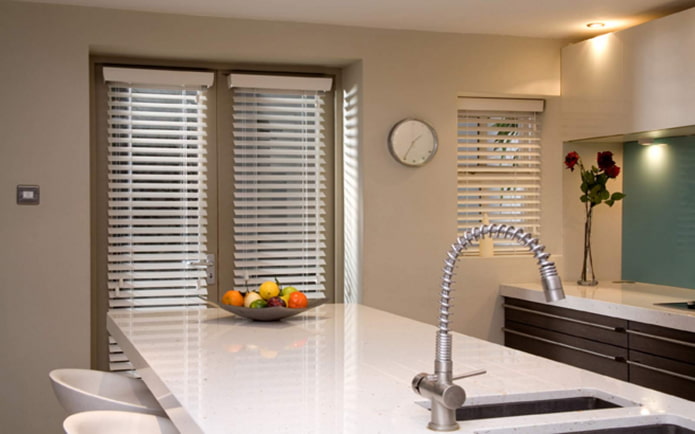
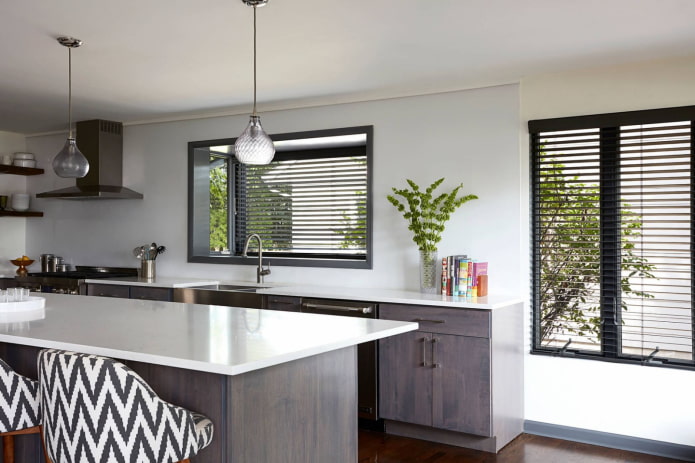
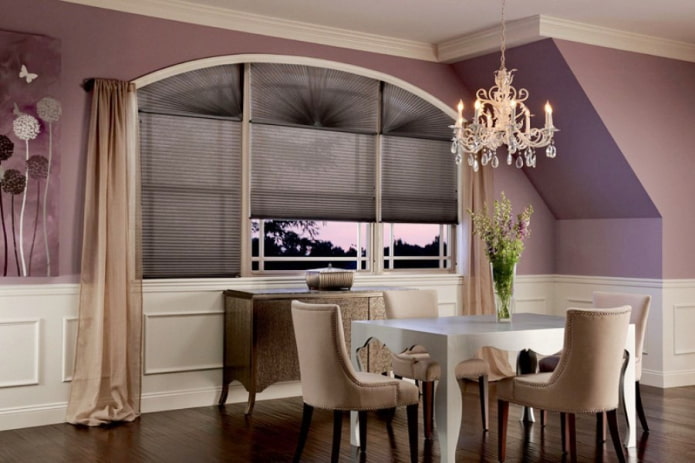

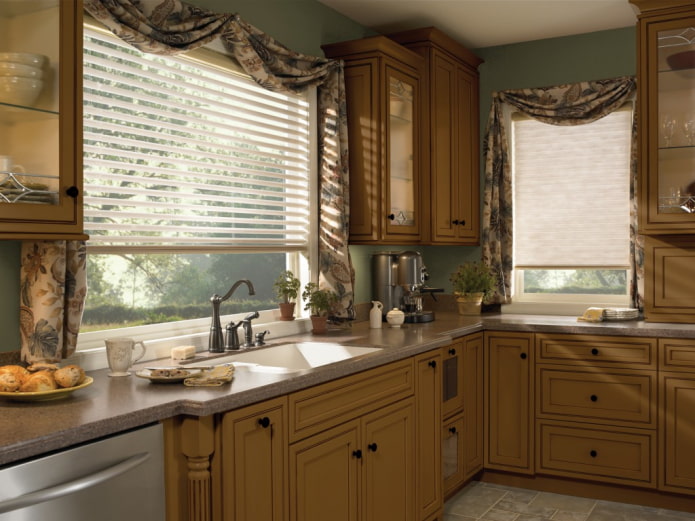
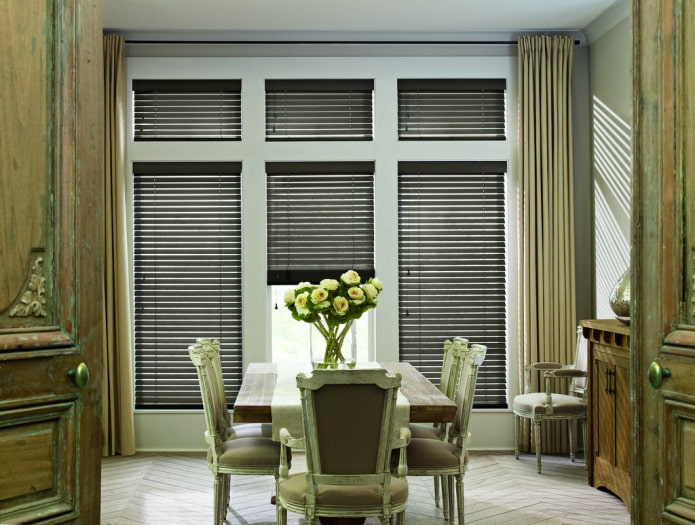
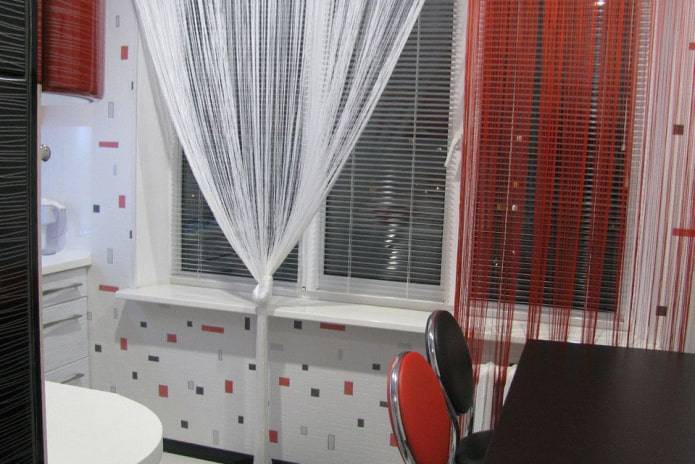

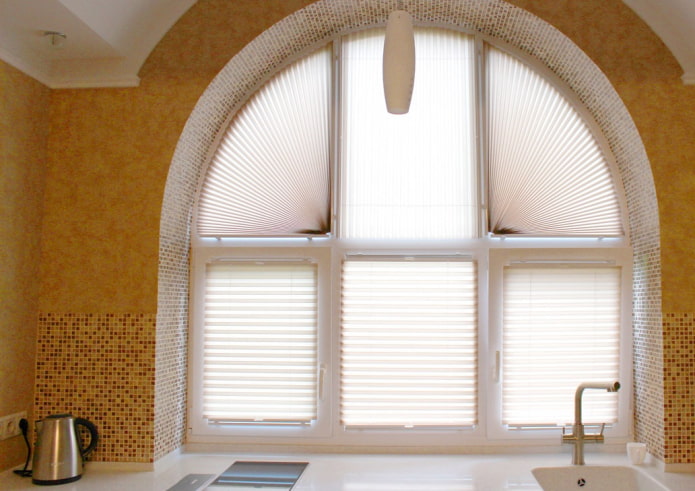
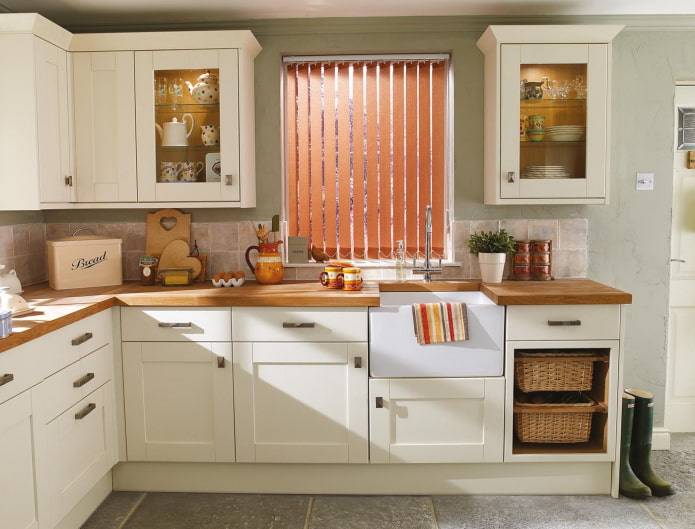
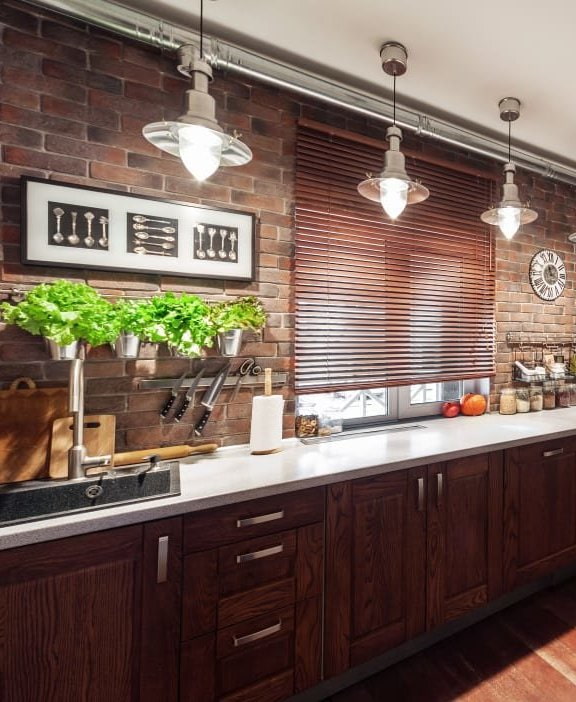
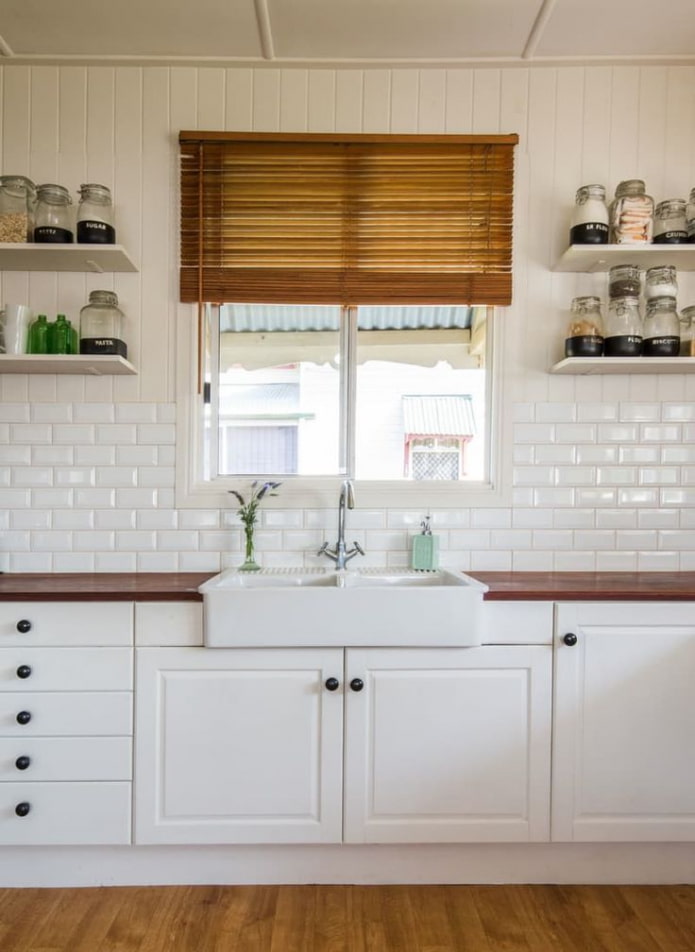
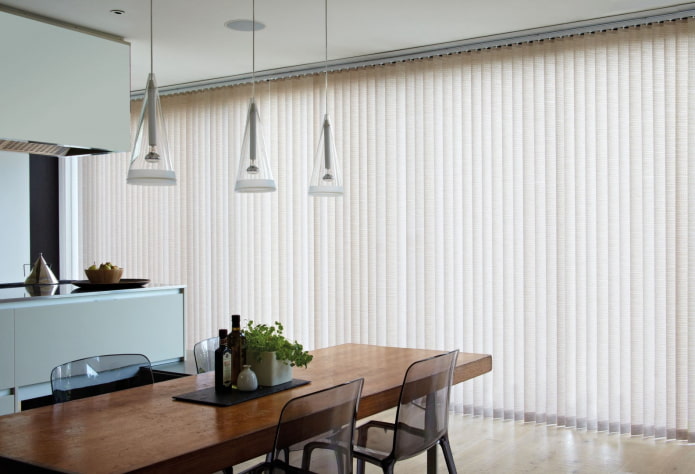
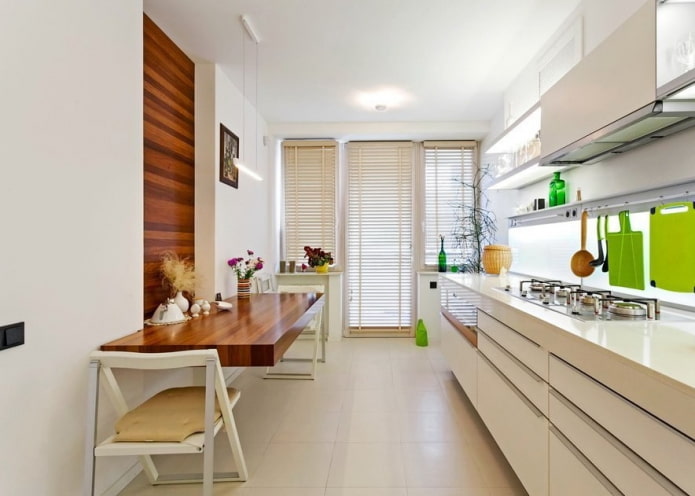
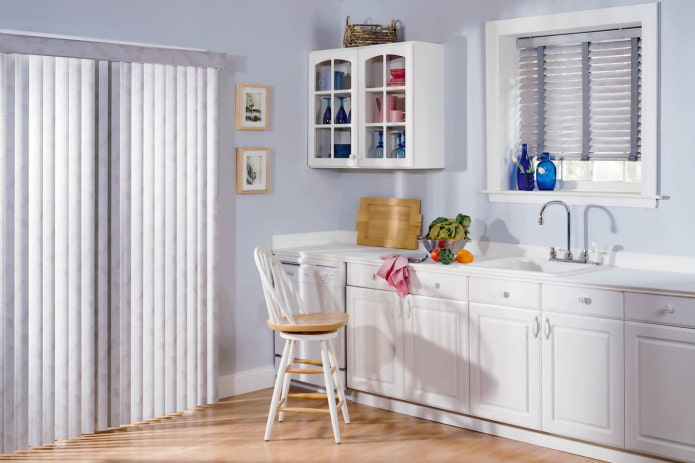

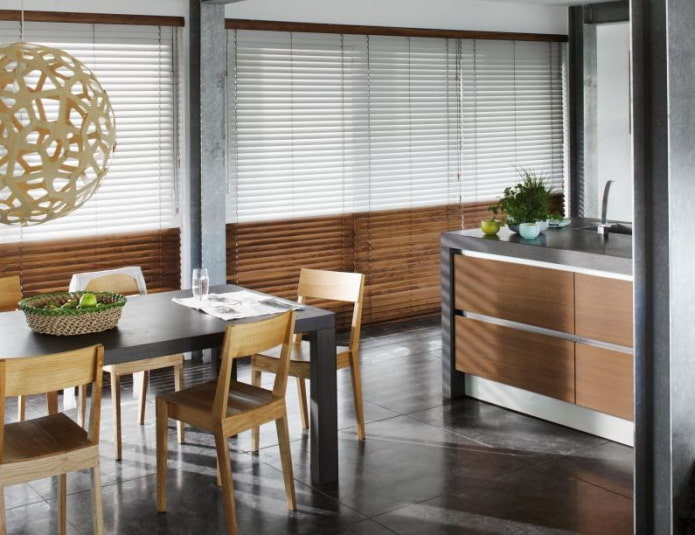

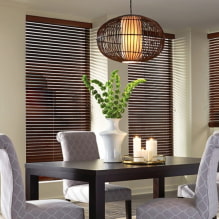
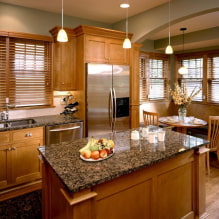
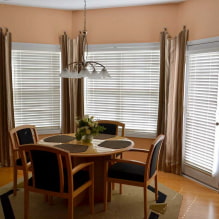
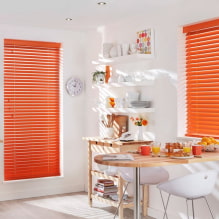
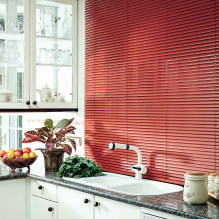
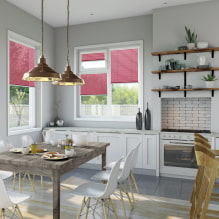
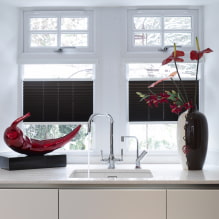
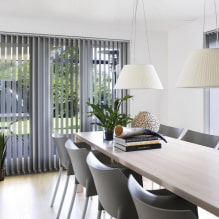
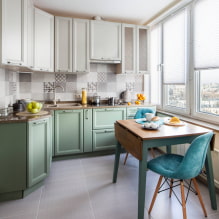
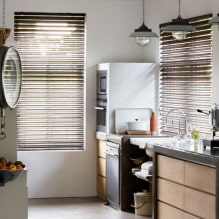
 How to choose the color of your kitchen sink?
How to choose the color of your kitchen sink? White kitchen set: features of choice, combination, 70 photos in the interior
White kitchen set: features of choice, combination, 70 photos in the interior Black set in the interior in the kitchen: design, choice of wallpaper, 90 photos
Black set in the interior in the kitchen: design, choice of wallpaper, 90 photos How to choose curtains for the kitchen and not regret it? - we understand all the nuances
How to choose curtains for the kitchen and not regret it? - we understand all the nuances Design of a white kitchen with a black countertop: 80 best ideas, photos in the interior
Design of a white kitchen with a black countertop: 80 best ideas, photos in the interior Kitchen design with green wallpaper: 55 modern photos in the interior
Kitchen design with green wallpaper: 55 modern photos in the interior